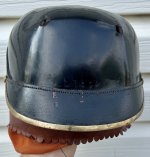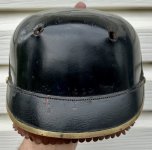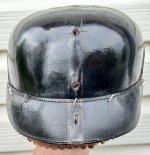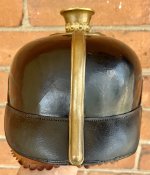Some progress today as I completed the first pass of stitching across the visor. I also put the trim back on as unlike most visors the stitching of this one did not go under the trim. I have stitched a reddish orange felt officer helmet before which obviously was much easier than this. However, as with most of these projects once you are faced with a challenge you start thinking and come up with a solution. In this case, I used a thicker gauged T pin to slightly enlarge each hole from the outside as I stitched. I also found that I did have a blunt needle of useable size and it worked great! That really speeded up the process. I was able to use some back lighting which did light up the holes. Anyway, hopefully the return stitch will be just as quick.





